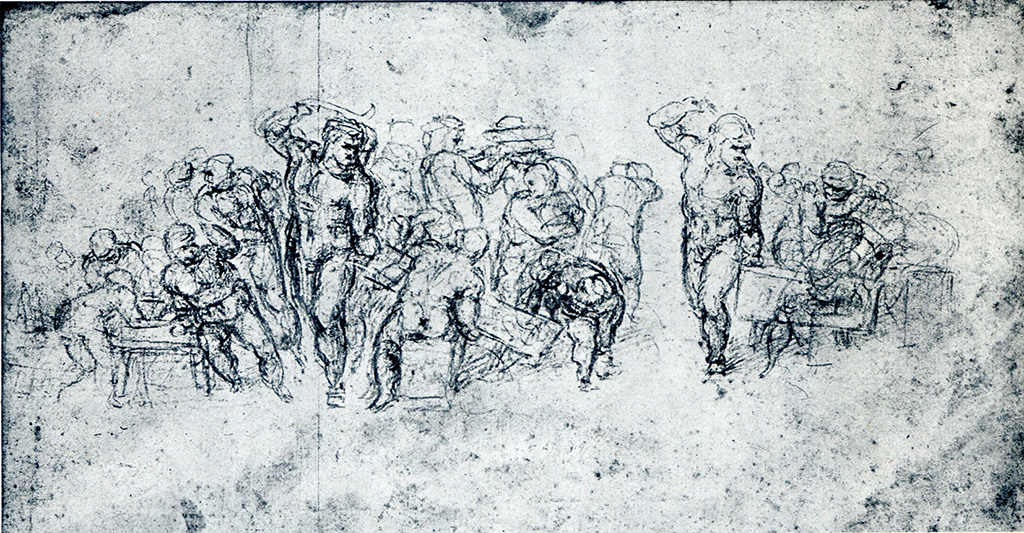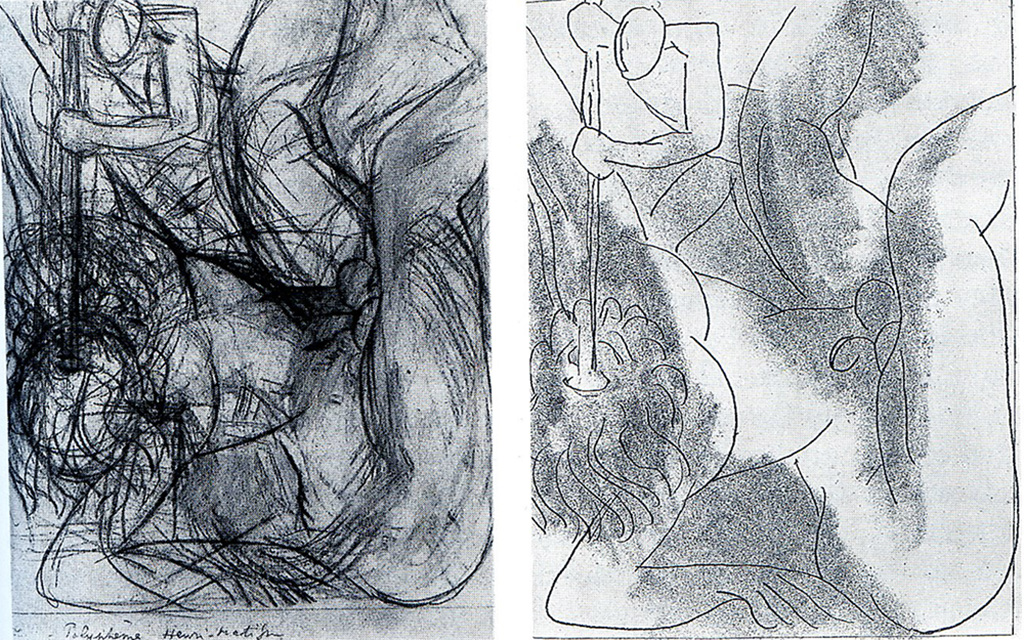Feeling and the sketch
The chapter featured in this Post tells how, over the centuries, artists changed the way they conceived the function of the sketch. From being a step in the Academic method, by which predetermined elements were organised into a composition, it was used in more open-ended essentially Modernist ways. The chapter also explains what I mean by drawing with the “feel-system” and, in doing so, prepares readers for the crucial role it plays in later chapters. For this reason it is key to the ideas developed in my book.
.
Chapter 4 – The sketch and the feel system
.
Feeling-guided sketches by Michelangelo and Matisse.
A foretaste of the illustrations found in Chapter 4 are included below. The first of these is by Michelangelo, a Renaissance artist, and the other by Matisse, a Modernist one. The difference between them reflects both similarities and changes that had taken place in the way artists approached their work.
.

.

.
Other Posts that publish chapters from “Drawing on Both Sides of the Brain”.
- Chapter 1: Accuracy versus expression
- Chapter 2: Traditional artistic practices
- Chapter 3: Modernist ideas that fed into new teaching methods
- Chapter 5: Negative spaces.
- Chapter 6: Contour drawing
- Chapter 7: Copying Photographs
- Chapter 8: Fast drawing, learning and expression
Other drawing related Posts
Full list of Posts in all categories
.
Another thought provoking discussion, fascinating to one who is interested in philosophy and psychology but has no background in drawing or painting. So many connections…
Drawings that show the visual thinking process are like a time lapse glimpse into an individual’s thinking and creating process. Decisive, indecisive, musing, stop, go. This is one reason I appreciate seeing the artist’s preparatory drawings along with the finished piece which is the arrival point in the journey. Another reason is that they usually have so much animation in them.
Again, thank you for sharing. I’m finding these chapters helpful in my current work.
Gosh! Here I am again, almost to the day two years later, rereading this chapter, but this time after a day of feeling alone and trying to draw all by myself. I am struck again, by how apt each chapter speaks to my experience of each day’s work: today I struggled with accuracy. Worked hard. Then, I just gave up and drew in a feeling, free-hand kind of way. Felt pretty unsure about the value of my day’s work until I reread this chapter and felt happy to realize that I’d stumbled into two solid ways of learning how to draw: accuracy, and the feel-system. Thank you for helping me find my way with more confidence, and with a great deal more understanding.
This chapter packs in two important subjects. Giving greater awareness to the use of sketches and studies, both on their own and in tandem and then goes into the nuances of drawing with feeling and how that can be interpreted and used to one’s benefit. A very thoughtfully written article with exercises included. Thank you for this!